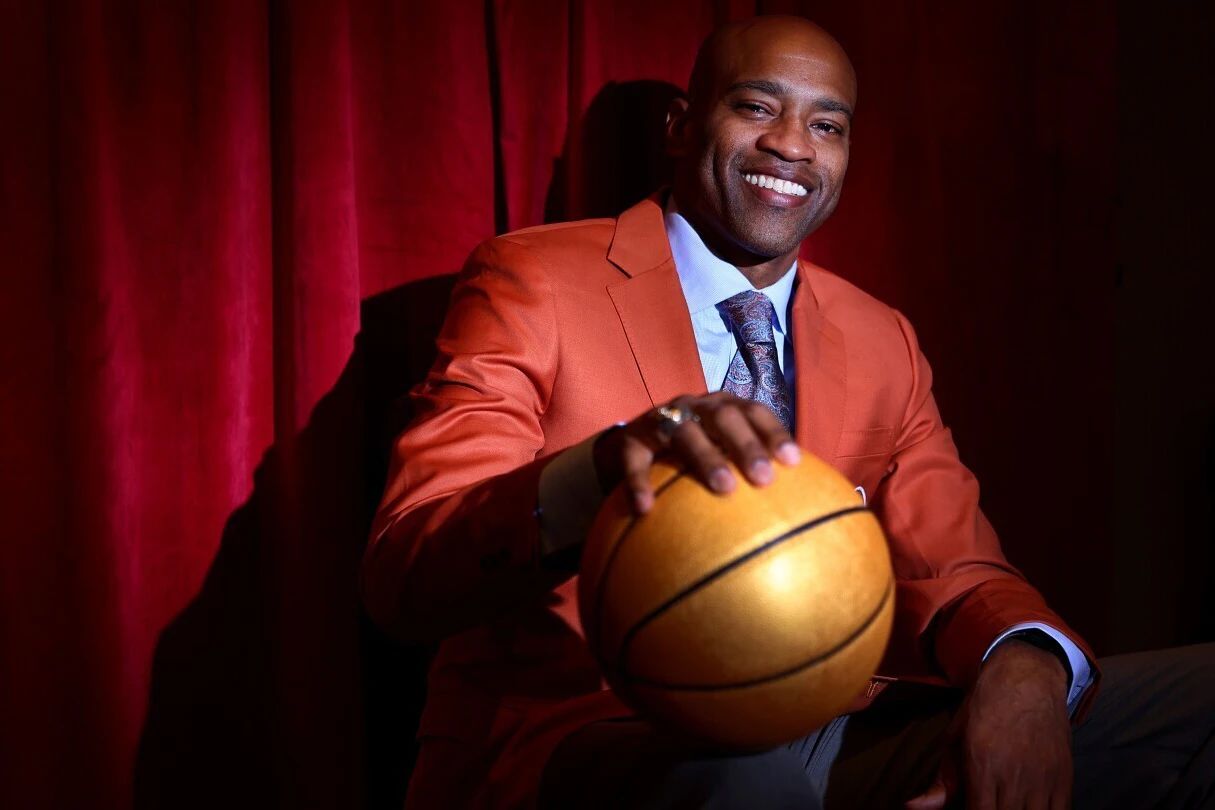“Airman” Carter has finally entered the Hall of Fame.
For many current fans, Carter is a familiar name, but his glorious experiences seem distant. This is because Carter’s career spanned 22 seasons. In terms of seniority, he could have entered the Hall of Fame years ago, but the NBA rules stipulate that players must be retired for four years first.
If it weren’t for the pandemic that suspended the NBA season, Carter might have continued playing. If LeBron wants to become the player with the longest career, he needs to play a few more years. Therefore, for young fans today, Carter is a living fossil of the NBA.
From a macro perspective, Carter was regarded as one of Michael Jordan’s successors after Jordan retired, but obviously, he fell far short of that goal. In his 22 seasons, he made the playoffs in 11 seasons, totaling 17 series. Only one of these was the Eastern Conference Finals, and five were Eastern or Western Conference Semifinals.
Stars with extremely long careers usually have their careers divided into two parts. Take Kobe Bryant as an example: the first half was about becoming a leader, and the second half was about being a leader. For Carter, the first half was being a leader, and the second half was about mentoring younger players.
Carter also scored over 25,000 career points, but what he’s most remembered for is his dunks. Thousands of children around the world fell in love with basketball because of Carter’s dunk performance at the 2000 All-Star Weekend.
Among these children, the most obsessed ones were around 16 to 20 years old at the time, born between 1980 and 1984. That means these crazy fans are now 40 to 44 years old. They’ve reached middle age, and some are even weighed down by life’s pressures.
More than 20 years ago, Carter was a phenomenon, representing the future of basketball. But life played a big joke on him. Compare him to Chauncey Billups, who also entered the Hall of Fame today: Billups was a late bloomer, starting chaotically but getting better and better until he achieved success; Carter peaked at the beginning, earning almost all his career honors during his seven years with the Raptors, only to fall into chaos later and finally accept his role as a mentor for younger players.
Even during his seven years with the Raptors, things were messy. He had conflicts with the media and fans, and when he was traded to the Nets, every away game in Toronto was met with deafening boos. Looking back on those thunderous boos from over a decade ago, we realize it was all the internet’s doing.
It wasn’t the smartphone era yet, but the internet was already popular on PCs. Carter had amazing personal stats, but he couldn’t lead the Raptors to success. He suggested the team trade the 4th pick for a veteran to chase the playoffs, but the Raptors used it to draft Chris Bosh. Toronto media broke the story that there was a disagreement between the star and the team on future directions, and Carter’s numerous injury absences were misinterpreted as faking injuries. As a result, after being traded to the Nets, he became the villain in the hearts of Toronto fans.
It wasn’t until the late stage of his career that Carter had a chance to clarify the truth. He said he called the general manager to express his willingness to stay in Toronto, but GM Rob Babcock said it was too late because a verbal agreement with the Nets had already been reached. Coach Sam Mitchell revealed that he wanted to call the owner to suggest canceling the trade but hesitated, fearing it would be overstepping his authority.
In short, the Raptors were unwilling to continue investing in Carter, decided to rebuild, and didn’t want to clear his name to make themselves look blameless. Toronto fans didn’t care about the 内情 or understand the details; they only believed what the newspapers and computers said. That’s why every time Carter came to town, they booed him enthusiastically. Many former Raptors fans still recall the feeling—they just wanted to join in the booing, thinking it was fun.
Of course, this also created several iconic moments in Carter’s career, such as his three-point buzzer-beater and dunk buzzer-beater against the Raptors. Nearly a decade later, they had a chance to reconcile. When the Raptors played a tribute video for Carter, fans initially booed out of habit, but then they thought twice and stood up to applaud.
Carter’s experience reflects the diverse ecology of NBA stars. Not all super-talented players end up like Jordan, Kobe, LeBron, or Curry. There are also players like Carter, an unfinished product of the NBA’s star-making system, similar to Grant Hill but with a more tortuous path. He had dunk performances that future generations can’t match and seven-game battles with Allen Iverson, but we never saw him play in the Finals. His cousin duo with Tracy McGrady fell apart before it could take shape. In fact, he didn’t realize he was cousins with McGrady until he entered the NBA—and they weren’t even blood relatives; McGrady’s grandmother was the sister of Carter’s step-grandmother.
For Carter’s fans who are now in their 40s, life is like this: not everything goes as planned. As long as time is long enough—like Carter playing 22 seasons and his fans becoming fathers—they all understand that life is like a lottery. Some lose first and then win, some win first and then lose, some win and lose alternately, and some neither win nor lose. Only a few people keep winning all the time, but if you persist, you won’t keep losing forever.
Carter, now in the Hall of Fame, will tell you that if you think you’ve been losing all your life, it’s because you haven’t persisted long enough.
